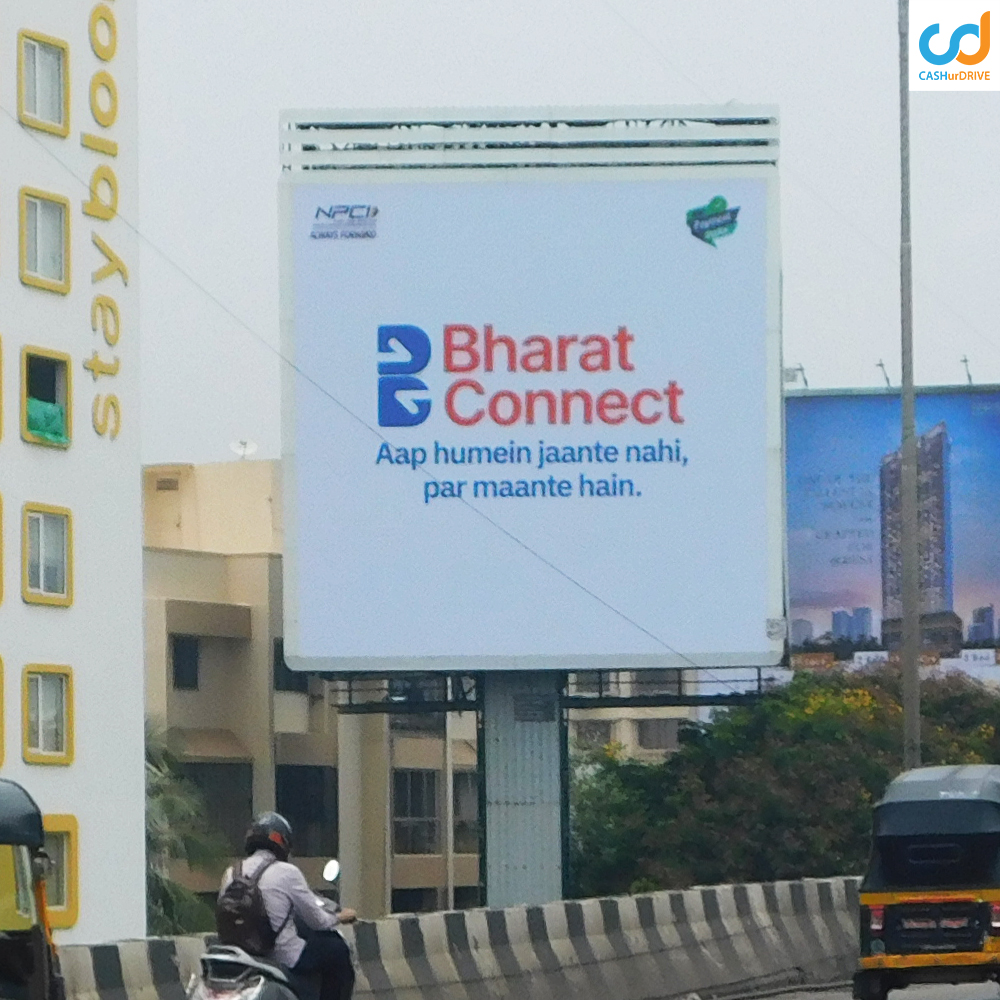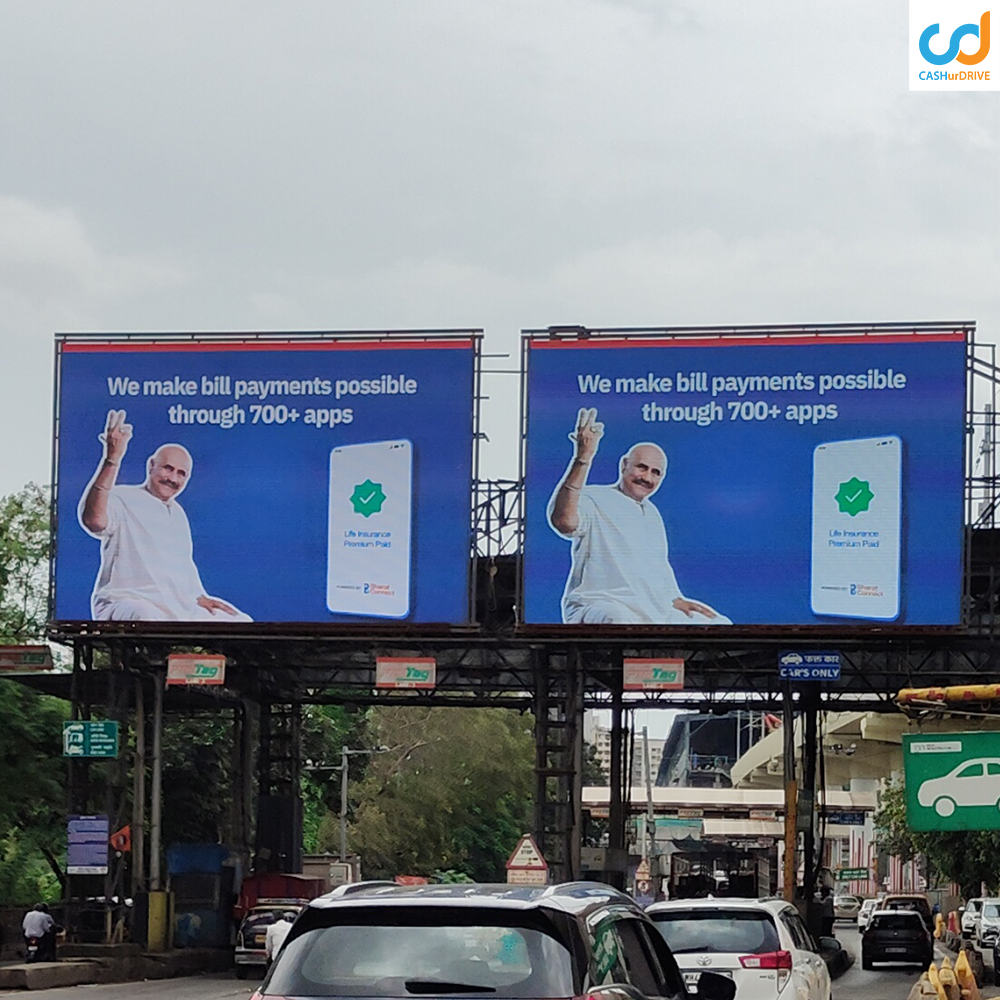
The Hoarding Game in India: Trends, Strategies & Success Stories
As the world moves forward, technology is evolving at a fast pace, and advertising is evolving along with it. This is probably the reason that, in a world oversaturated with digital marketing, social media, and outdoor advertising, it has come up as one of the best options that has stood the test of time. Despite being one of the oldest forms of advertising, hoarding ads still offer a unique and powerful opportunity for brands to reach their target audience in the most effective way.
In fact, most of the advertisers are not aware of the fact that hoarding advertising or billboards reaches almost 93% of the population and that too within a week. While both traditional billboard advertising and digital marketing have their place, hoarding advertisements have existed in various forms for many years, and there’s a reason behind it. Even the most reputable e-commerce brands use huge hoarding advertisements to get the attention of their target audience.
In this blog, we decode the latest trends ruling the OOH (Out-of-Home) arena, unpack strategies that brands are using to win eyeballs, and spotlight some of the most successful hoarding campaigns across the country. Whether you’re a marketer, media planner, or simply curious about what’s making India’s skyline so ad-savvy, this read has something for you, curated under the guidance of the best hoarding advertising agency experts.
The Evolution of Hoarding Advertising in India
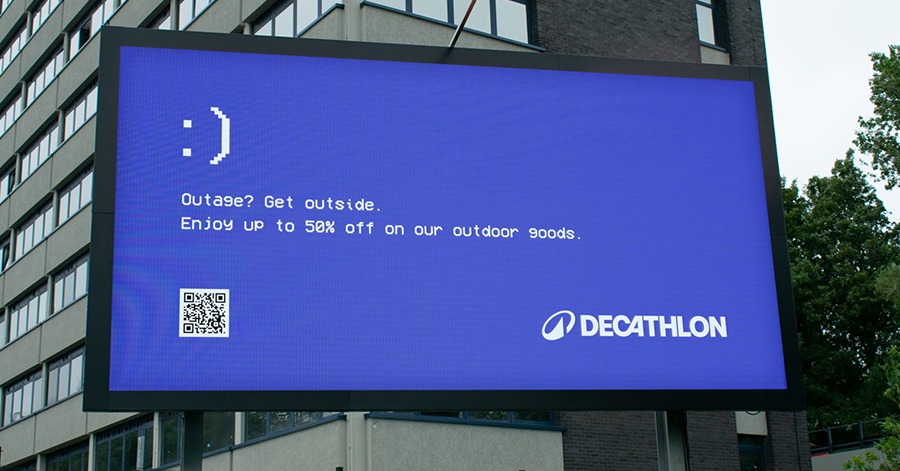
Hoarding advertising agencies in India has come a long way from static billboards with bold fonts and punchy taglines. Today’s campaigns are more data-driven, visually striking, and often interactive. As cities expand and attention spans shrink, hoardings are being reinvented to stay relevant, not just as roadside posters, but as larger-than-life storytellers.
Key shifts include:
-
Transition from print-only to digital hoardings (DOOH)
One of the biggest changes we saw over the last few years was the transition from OOH to DOOH. Unlike traditional static Outdoor hoarding advertising, DOOH allows brands to run dynamic, time-sensitive, and programmable content. A brand can now update messaging based on weather, time of day, or even trending topics.
For example, a coffee brand might display “Hot Brew, Cold Day?” in the morning and switch to “Chill with Iced Latte” by afternoon — all from a single digital screen.
-
Hyperlocal customisation based on regional and linguistic preferences
India’s linguistic and cultural diversity has driven a shift toward hyperlocal marketing through hoardings. Hoarding advertising agency brands are now tailoring their creatives to resonate with local audiences—using regional languages, city-specific references, and cultural nuances.
Whether it’s a Marathi campaign in Pune, a Bhojpuri tagline in Patna, or a Tamil message in Chennai, regional targeting is proving to be more relatable and therefore more effective in driving brand recall and action.
-
Eco-conscious materials are being used for hoarding prints.
With sustainability becoming a top concern for both consumers and regulators, brands are adopting eco-friendly practices in hoarding production. This includes: PVC-free flex materials, Water-based inks, Solar-powered lighting and Biodegradable vinyl.
Some agencies also promote recyclable hoarding sheets or reusable modular structures, significantly reducing waste after a campaign ends. This not only aligns with environmental goals but also enhances brand image in a conscious consumer landscape.
-
Increased focus on ROI, with footfall data, impressions, and engagement metrics
One of the most significant shifts we saw in Hoarding advertising agencies in India is the integration of analytics and data in hoarding campaigns. With tools like geotagged footfall counters, traffic pattern analytics, and even mobile location data, brands can now track impressions, visibility, and engagement potential of their outdoor campaigns more accurately.
Top 5 Hoarding Trends Dominating The Market
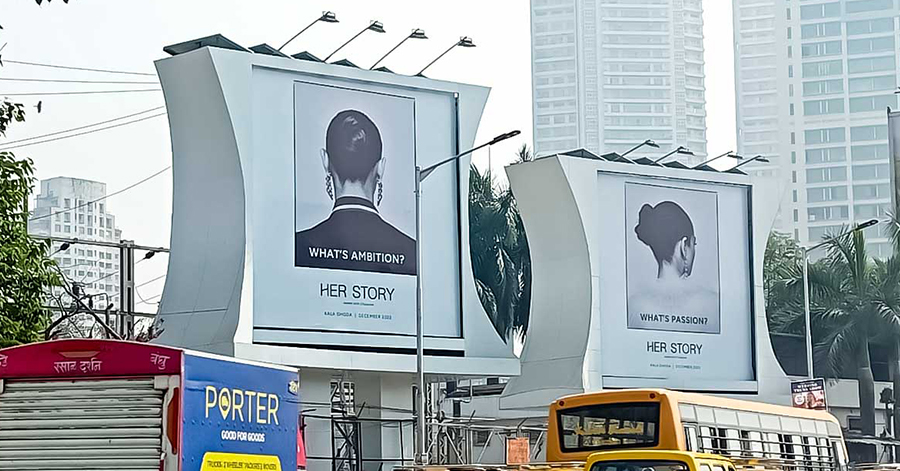
The Indian hoarding landscape is no longer about simply renting a big space in a busy area — it’s now about making strategic, creative, and sustainable choices that amplify brand value and connect meaningfully with audiences. Here are the top trends that are currently shaping hoarding advertising in India:
-
Data-Driven Placement: Smarter Locations, Stronger Impact
Gone are the days when brands chose hoarding spots based solely on visibility or price. Today, consumer behaviour data, traffic analytics, and location intelligence tools help advertisers pinpoint high-impact zones. Whether it’s outside a busy metro station, near an IT park, or en route to a college campus, the aim is to catch the audience in their moment of decision-making.
Platforms like programmatic OOH (pDOOH) even allow for data-based automated buying and placement, helping marketers ensure maximum ROI. The result? Less guesswork, more precision.
-
DOOH (Digital Out-of-Home) Takeover: Content That Changes in Real-Time
Digital hoardings are reshaping the outdoor advertising experience in India’s top cities. With the ability to run dynamic content that updates in real-time, brands can now create campaigns that respond to:
- Time of day (morning vs. evening messaging)
- Live events (e.g., cricket match scores)
- Weather conditions (e.g., rain or heatwave promotions)
- Festive greetings and limited-time offers
This level of responsiveness boosts audience engagement and allows brands to stay timely, contextual, and relevant — all without having to reprint or reinstall anything.
-
Sustainability in Hoarding: Advertising with a Conscience
With increasing pressure on brands to adopt greener practices, sustainability has made its way into the hoarding game. Today, many companies are switching to:
- Biodegradable or recyclable flex materials
- Water-based, non-toxic inks
- Solar-powered hoarding illumination
- Reusability frameworks for billboard structures
These steps not only reduce the environmental footprint but also position brands as eco-conscious, a trait modern consumers are valuing more than ever. Agencies, too, are offering Green OOH packages, catering to brands that want visibility without compromising on values.
-
Creativity That Thinks Outside the Frame
In a world of constant visual bombardment, only the most imaginative hoardings stop people in their tracks. Brands are now ditching flat, formulaic creatives for:
- 3D hoardings that pop out of the billboard frame
- Motion-triggered or LED-lit displays
- QR codes that lead to instant discounts, experiences, or AR interactions
- Optical illusions and anamorphic art that generate social media buzz
Such innovations don’t just catch the eye — they create Instagram-worthy moments, making hoardings a valuable part of a brand’s content marketing arsenal.
-
Regional & Vernacular Focus: Speak the Local Language
India’s linguistic and cultural diversity presents both a challenge and an opportunity for advertisers. Smart brands and companies offering Outdoor Advertising in Delhi are embracing vernacular language hoardings to connect with local audiences on a personal level.
Using regional festivals, slang, and visual elements, these hyper-targeted hoardings build familiarity and trust. A hoarding in Coimbatore with Tamil text, or one in Jaipur referencing a Rajasthani tradition, resonates much more deeply than a generic, one-size-fits-all ad.
This regional approach is especially effective for:
- FMCG brands launching in new territories
- Political campaigns
- E-commerce platforms targeting Tier 2/3 cities
- Events or hyperlocal services
Best Winning Strategies Brands Are Using For Hoarding Advertising

We have to agree to the fact that hoarding advertisements has to be more than just being large. The advertisement should be effective. As the Outdoor hoarding advertising landscape becomes more competitive and consumer attention grows increasingly fragmented, brands are upping their game with smart strategies that go beyond size and location. It’s no longer just about visibility — it’s about clarity, creativity, context, and conversion. Here’s how the frontrunners are playing the hoarding game in India:
-
Clarity over Clutter
Brands have now understood the fact that it’s just about numbers, but a single sharp message that tells your story in a few seconds. The golden rule of hoarding design today is: simplify to amplify. Minimalist layouts, strong visuals, and short, punchy taglines are performing better than text-heavy creatives. Viewers typically have 3–5 seconds to register a hoarding while driving or walking, so the message must be instantly understandable.
-
Contextual Placement
In the era of hyperlocal marketing, brands that align their hoardings with local context win big. This doesn’t just mean placing an ad in a high-traffic area — it’s about putting the right message in the right place at the right time. Swiggy and Zomato are champions at this. You’ll spot hoardings with quirky food puns near tech parks, gyms, or residential areas where cravings strike.
-
Integrated Campaigns
In the past, hoardings were often treated as standalone advertisements. But now, the smartest brands are using them as one of many touchpoints in an integrated 360° campaign. Hoardings support digital campaigns by teasing or reinforcing messaging seen online. Some brands use QR codes on hoardings that link to Instagram filters, YouTube videos, or landing pages.
-
Real-Time Updates & Dynamic Messaging
With the rise of Digital Out-of-Home (DOOH), brands no longer need to wait days or weeks to update creatives. Real-time content refreshes allow hoardings to: Adapt to weather changes (e.g., “Rainy? Grab your monsoon shoes at 30% off!”), Celebrate festivals, match scores, or trending topics. Push time-specific offers, such as morning breakfast discounts or evening happy hour promotions. This real-time responsiveness keeps the campaign fresh and relevant — and increases engagement, especially when synced with social media chatter.
-
Influencer-Driven OOH
In a clever twist of digital-meets-physical, some brands are leveraging influencer content on hoardings to drive instant familiarity and trust. But this plays a huge role in the hoarding advertising cost. However, brands do not look at the cost because this strategy works well because it bridges the credibility of peer endorsement with the scale of outdoor advertising. Plus, it helps brands tap into an influencer’s fan base offline, where the messaging feels even more authentic.
Iconic Success Stories from the Indian Hoarding Landscape
While trends and strategies give us the framework, it’s the execution of ideas that separates good campaigns from unforgettable ones. These brands have turned hoardings into moments — some humorous, some emotional, all impactful. Here are some of the most iconic hoarding success stories in India that prove the power of Out-of-Home done right:
-
Netflix’s Creative Genius
From “Sacred Games” to “Money Heist,” Netflix India has faced dramatic, eye-popping hoardings that turn heads and trend online.
-
Amul’s Topical Hoarding Campaign
A masterclass in consistency and creativity, Amul’s hand-drawn billboard ads have become part of pop culture.
-
CRED’s Disruptive Branding
CRED’s quirky, minimalist hoardings (featuring nothing but their logo or a single line) created buzz simply by breaking the clutter.
-
Nykaa’s Regional Expansion
As Nykaa expanded to Tier-2 and Tier-3 cities, its regionally tailored hoardings (in local languages and dialects) helped it create instant connect and visibility.
-
Tanishq’s Festival & Wedding Campaigns
With elegant, emotionally resonant hoardings during festive seasons, Tanishq has successfully built brand love and urgency to buy.
Each of these brands used hoardings not as a one-off ad space, but as an extension of their brand identity and storytelling ethos.
The Future of Hoarding Advertising
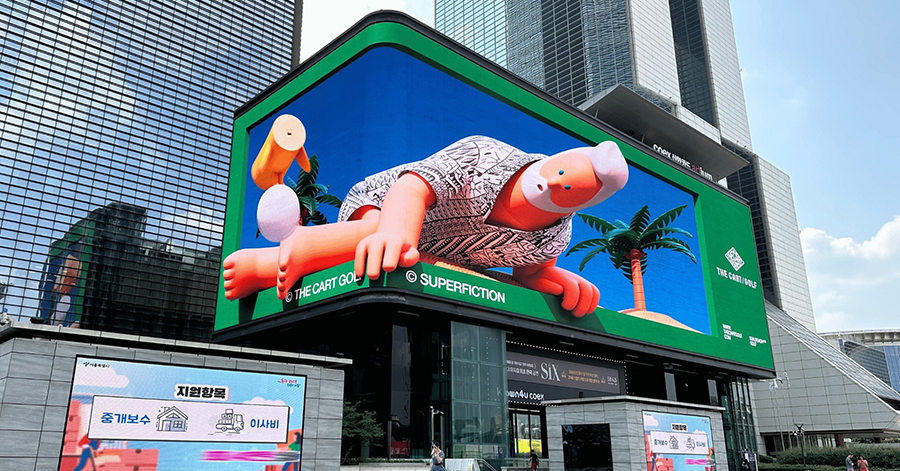
Despite the fact that digital marketing and social media trends are on the rise, hoarding ads are far from obsolete. In fact, what is going to happen is that hoardings will be integrated with other forms of advertising to drive deeper customer engagement. So, it’s the right time to invest in hoarding advertising and take your message to where the audience is.
Final Words!
Now that we have completed everything we should know about the Indian hoarding advertising agency market, it’s time to take advantage of this harmonious blend of creativity and strategic insight. Hoarding advertisements is a true testament or a constant reminder that no matter how many trends may come and go, some forms of advertising always stand tall and portray brand stories in the best possible way across generations. So, whether you’re a startup or a legacy brand, the hoarding game is your chance to make a statement that’s impossible to scroll past.
Own the Skyline with CASHurDRIVE Hoarding Advertising Services
Make your brand unmissable with CASHurDRIVE’s high-impact hoarding advertising solutions. We are one of the most reputable and Best hoarding advertising agency in India. From strategic location selection to bold, clutter-breaking creatives, we help you dominate the skyline and stay top-of-mind. Whether you’re launching a product, running a campaign, or building awareness, our hoardings ensure your message is seen, remembered, and acted upon. Go big. Go bold. Go CASHurDRIVE.
